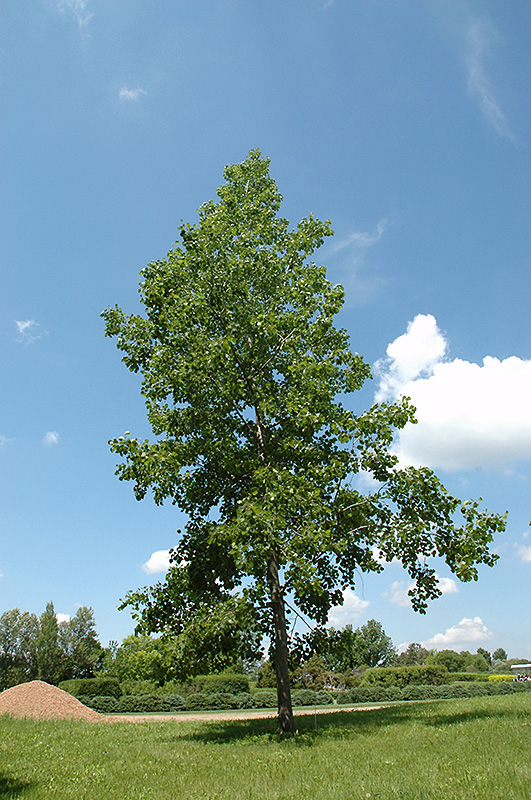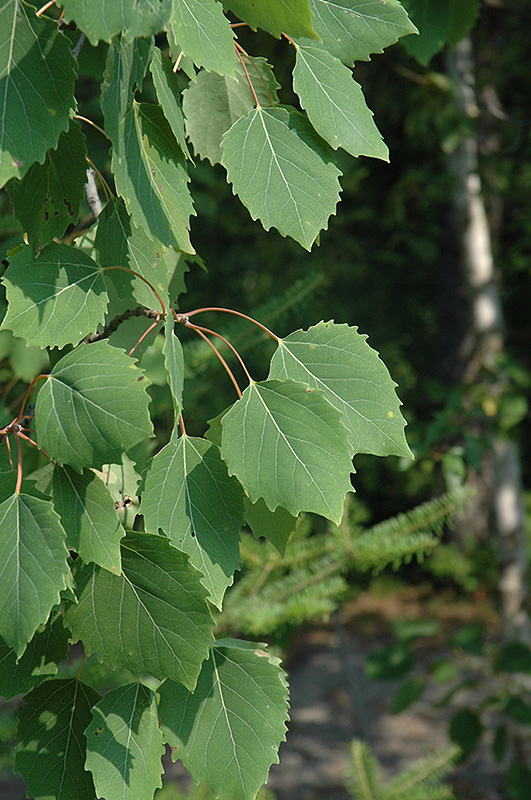* This is a "special order" plant - contact store for details
Height: 60 feet
Spread: 40 feet
Sunlight:
![]()
Hardiness Zone: 2a
Description:
A tall native shade tree which is relatively uncommon in urban yards; has attractive gray-green bark which is prominent in winter, also has good fall color, tolerates poor gravelly soils; best used for shade or naturalizing at the cottage
Ornamental Features
Bigtooth Aspen has forest green deciduous foliage on a tree with an oval habit of growth. The serrated oval leaves turn an outstanding yellow in the fall. The smooth grayish green bark adds an interesting dimension to the landscape.
Landscape Attributes
Bigtooth Aspen is a deciduous tree with a strong central leader and a shapely oval form. Its average texture blends into the landscape, but can be balanced by one or two finer or coarser trees or shrubs for an effective composition.
This is a relatively low maintenance tree, and is best pruned in late winter once the threat of extreme cold has passed. It has no significant negative characteristics.
Bigtooth Aspen is recommended for the following landscape applications;
- Shade
Planting & Growing
Bigtooth Aspen will grow to be about 60 feet tall at maturity, with a spread of 40 feet. It has a high canopy with a typical clearance of 5 feet from the ground, and should not be planted underneath power lines. It grows at a fast rate, and under ideal conditions can be expected to live for 70 years or more.
This tree should only be grown in full sunlight. It is an amazingly adaptable plant, tolerating both dry conditions and even some standing water. It is not particular as to soil pH, but grows best in sandy soils. It is quite intolerant of urban pollution, therefore inner city or urban streetside plantings are best avoided. This species is native to parts of North America.
* This is a "special order" plant - contact store for details








